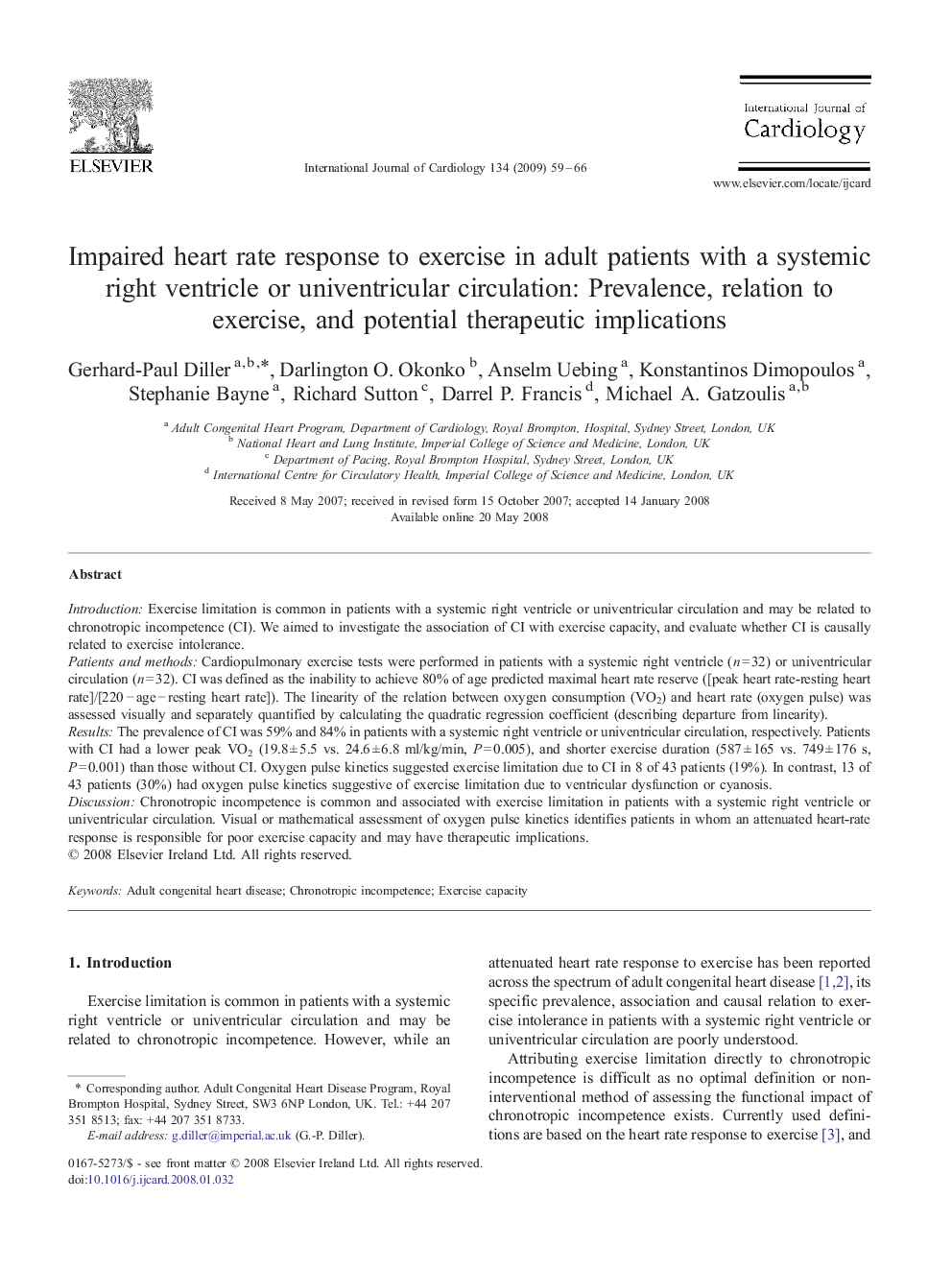| Article ID | Journal | Published Year | Pages | File Type |
|---|---|---|---|---|
| 2932993 | International Journal of Cardiology | 2009 | 8 Pages |
IntroductionExercise limitation is common in patients with a systemic right ventricle or univentricular circulation and may be related to chronotropic incompetence (CI). We aimed to investigate the association of CI with exercise capacity, and evaluate whether CI is causally related to exercise intolerance.Patients and methodsCardiopulmonary exercise tests were performed in patients with a systemic right ventricle (n = 32) or univentricular circulation (n = 32). CI was defined as the inability to achieve 80% of age predicted maximal heart rate reserve ([peak heart rate-resting heart rate]/[220 − age − resting heart rate]). The linearity of the relation between oxygen consumption (VO2) and heart rate (oxygen pulse) was assessed visually and separately quantified by calculating the quadratic regression coefficient (describing departure from linearity).ResultsThe prevalence of CI was 59% and 84% in patients with a systemic right ventricle or univentricular circulation, respectively. Patients with CI had a lower peak VO2 (19.8 ± 5.5 vs. 24.6 ± 6.8 ml/kg/min, P = 0.005), and shorter exercise duration (587 ± 165 vs. 749 ± 176 s, P = 0.001) than those without CI. Oxygen pulse kinetics suggested exercise limitation due to CI in 8 of 43 patients (19%). In contrast, 13 of 43 patients (30%) had oxygen pulse kinetics suggestive of exercise limitation due to ventricular dysfunction or cyanosis.DiscussionChronotropic incompetence is common and associated with exercise limitation in patients with a systemic right ventricle or univentricular circulation. Visual or mathematical assessment of oxygen pulse kinetics identifies patients in whom an attenuated heart-rate response is responsible for poor exercise capacity and may have therapeutic implications.
